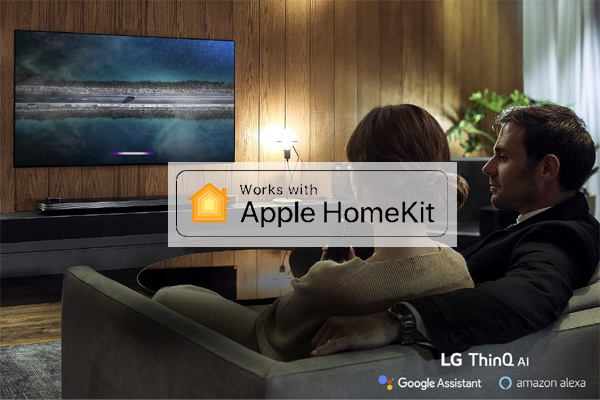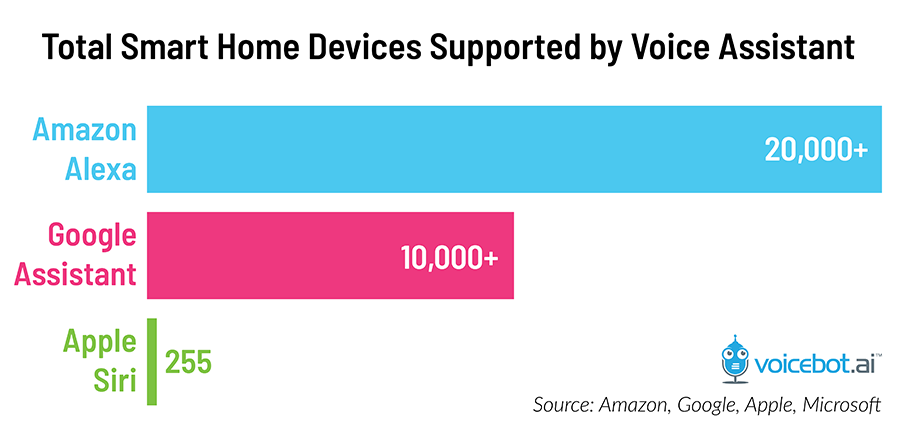AirPlay2 and HomeKit Support Will Arrive on LG TVs Mid-2019, Represents a Shift to Increased Siri Device Support

Image Credit: LG
At CES 2019, LG announced it would be including Apple HomeKit and AirPlay 2 several 2019 television models. Earlier this month, LG released a follow-up announcement stating a time frame for the feature rollout: mid-2019. The inclusion of support for AirPlay 2 would allow users to stream audio and video content to their LG TV. Apple HomeKit integration allows for users to control streaming to televisions, amongst other smart home control features, with Siri. In the follow-up announcement, LG also stated it would include integrated Alexa support in a firmware update. LG’s press release states,
New LG TVs will receive an upgrade mid-year to support Apple AirPlay 2 and Apple HomeKit for easy streaming of video and audio content and connectivity to Apple’s smart home products. 2019 LG TV owners can also expect to receive a firmware update that will add Amazon Alexa support to complement Google Assistant which is included out of the box, making LG the only TV brand to provide support for both leading AI platforms without the need for additional hardware.
This means LG is using Alexa Voice Service (AVS) which incorporates Alexa functionality directly into devices with microphones. Most smart TV Alexa integrations are based on a connection to an Alexa skill that offers limited device control functionality.
AirPlay 2 Specs
AirPlay 2 was announced at Apple’s annual Worldwide Developers Conference, back in June 2017. AirPlay allows users to stream content between enabled audio, video, device screens, and photo devices. Using Apple HomeKit, AirPlay 2 users are able to control streaming with Siri. Using AirPlay 2 requires an Apple phone, tablet, or computer to act as the HomeKit controller. A device like the Apple TV, HomePod, or third-party speakers and TVs, are then able to be controlled with voice commands using Siri. At CES 2019, LG made that list of controllable devices longer, announcing it was adding AirPlay compatibility to all of its 2019 smart televisions. Here is a list of AirPlay 2 supported TVs:
-
- LG OLED (2019)
- LG NanoCell SM9X series (2019)
- LG NanoCell SM8X series (2019)
- LG UHD UM7X series (2019)
- Samsung QLED Series (2019 and 2018)
- Samsung 8 Series (2019 and 2018)
- Samsung 7 Series (2019 and 2018)
- Samsung 6 Series (2019 and 2018)
- Samsung 5 Series (2019 and 2018)
- Samsung 4 Series (2019 and 2018)
- Sony Z9G Series (2019)
-
- Sony A9G Series (2019)
- Sony X950G Series (2019)
- Sony X850G Series (2019 85″, 75″, 65″ and 55″ models)
- VIZIO P-Series Quantum X (2019)
- VIZIO P-Series Quantum (2019 and 2018)
- VIZIO P-Series (2018, 2017 and 2016)
- VIZIO M-Series Quantum (2019)
- VIZIO M-Series (2018, 2017 and 2016)
- VIZIO E-Series (2018, 2017 and 2016 UHD models)
- VIZIO V-Series (2019)
- VIZIO D-Series (2018)
Siri Support for the Smart Home Significantly Lower Than Other Voice Assistants
The focus on the inclusion of Siri support represents a changing view of Apple as an increasingly important player in the smart home market. Siri does not support nearly as many smart home devices as Alexa or Google Assistant. Instead, Siri holds a strong mobile presence. In October 2018, Voicebot reported Siri supported just 255 smart homes devices. That number had only expanded to 267 four months later when Apple announced that former Microsoft executive and smart lock startup founder Sam Jadallah would assume responsibilities for the company’s smart home efforts.

Voicebot research from the 2018 Voice Assistant Consumer Adoption Report has found that Apple Siri holds 44% of smartphone virtual assistant use. Apple showing interest in expanding its smart home compatibility, and doing so by focusing on integration in smart TV’s makes a lot of sense. One-third of smart speaker owners use smart TVs, as found by Voicebot in the 2019 Smart Speaker Consumer Adoption report, making them the most popular smart home devices by a wide margin. Voicebot’s Ava Mutchler also predicted after this year’s CES that companies are positioning the television as the central smart home hub, and the key to smart home adoption. Integrating HomeKit and AirPlay 2 on all 2019 LG TV’s is a bold move and it signifies that Apple is starting to gain more traction for its smart home efforts.
Google Assistant Television Compatibility
It is a big win for Siri to be integrated into an entire line of televisions, however, Apple has quite a bit of catching up to do. Both Google Assistant and Alexa already offer numerous ways to integrate voice commands into televisions.
Google’s Chromecast device enables Google Assistant users to stream from their smartphone or other Assistant enabled devices to their television with voice commands. Television manufacturers do not need to add anything to their TV’s to include Chromecast, because it plugs into an HDMI port and connects to compatible devices using Wi-Fi. Compatible devices include Android-based smartphones and tablets, iPhones and iPads, and any Chrome browser (the computer OS does not matter).
Chromecast is $35 and combined with its extensive TV compatibility, it has a wider audience than the Apple AirPlay 2 sender and receiver setup. In addition, Chromecast includes more applications regardless of whether you have an Android or an iPhone. YouTube, Google Play Music, and third-party apps like Spotify, Pandora, Netflix, and Hulu are all available to command via voice with Google Assistant when using Chromecast. There is a full list of Chromecast supported applications here.
Alexa Television Compatibility
There are a variety of ways users can control their television with Amazon Alexa. This includes using Amazon’s Fire TV devices, Echo devices, and third-party devices with built-in Alexa support. In terms of available content, Amazon Prime members have access to a number of audio and video streaming services, which can be found here. Non-Prime users can access individual platform subscriptions to stream content from.
- Users of the Fire TV or Fire TV Stick can use an included remote to issue voice commands while holding down the microphone button at the top. Fire TV Cube users do not need a remote, as there are far-field microphones built-in to the device. The Fire TV Cube works similarly to Chromecast, as an HDMI plug-in device that offers different streaming channels.
- Amazon Echo smart speakers, or third party devices with Alexa integration, such as the Sonos Beam Soundbar, can also be paired with Fire TV devices, like the Fire TV Cube, to enable voice control.
- Some DVR providers support Alexa, such as TiVo, Verizon Fios, Frontier, Dish Network, DirecTV, and Optic Hub.
- Certain televisions offer built-in Alexa support as well, allowing users to control the volume, power, and input with voice. The televisions will work with any compatible Alexa devices such an Echo dot, connecting to the smart speaker via WiFi. Many new Sony and LG TV’s also integrate Alexa voice control.
No matter which voice assistant a user decides to integrate their entertainment watching and listening with, it is clear that Apple Siri wants to play a larger role. LG 2019 televisions provide a unique opportunity to watch consumer choice of voice assistants, as the televisions will eventually support all three major U.S. voice assistants in use today.








